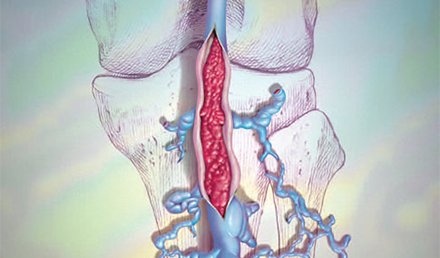The patient, a 30-year-year-old male, presented after a blow to his left foot and could not bear weight on it. View the image taken (Figure 1) and consider what your diagnosis would be. Resolution of the case is described on the next page.
Read MoreAbstracts in Urgent Care: February, 2013
Flu Activity Picks Up Nationwide Key point: CDC recommends vaccination and antiviral treat- ment against influenza Citation: http://www.cdc.gov/flu/spotlights/flu-activity-picks- up.htm. Centers for Disease Control and Prevention, National Center for Immunization and Respiratory Diseases (NCIRD). Influenza activity was continuing to increase in the United States and most of the country was experiencing high levels of in- fluenza-like-illness (ILI), according to CDC’s January 4 FluView report. “Reports of influenza-like-illness (ILI) are nearing what have been peak levels during …
Read More
Methicillin-Resistant Staphylococcus aureus
Urgent message: Accurate, early diagnosis and appropriate antibiotic treatment of MRSA is essential to prevent subsequent morbidity and mortality. SAMINA YUNUS MD, MPH, and DONNA GOETSCH, MSN, CNP Case Presentation A 22-year-old white female presents to the urgent care clinic with a complaint of an infected spider bite on her left upper thigh. She first noted a pimple-like lesion approximately a week before presentation. The lesion has subsequently grown and developed a central, black area …
Read MorePatient Portals Part II: ‘Who’s That Practice Behind the Curtain?’
Lee A. Resnick, MD, FAAFP I proposed a systematic approach intended to in my last column, I discussed the decision- making process around patient portals and mitigate risk, ensure security, and manage access. A portal, by definition, is an‘entrance‘— a virtual access point to a practice, its staff and patient medical records. The most common access point is a practice’s website and well-designed one can enhance access, improve efficiency, and help sell your practice to …
Read More
Acute Abdominal Pain in Children
Urgent message: This article will guide you through the differential diagnosis, management and disposition of pediatric patients presenting with acute abdominal pain. KAYLEENE E. PAGÁN CORREA, MD, FAAP Introduction “My tummy hurts.” That is a simple statement that shows a common complaint from children who seek care in an urgent care or emergency department.1 But the diagnosis in such patients can be challenging for a clinician because of the diverse etiologies. Acute abdominal pain is …
Read MoreAbstracts in Urgent Care: January, 2013
A Useful Marker of Invasive Disease in Well- Appearing Febrile Infants Key point: Procalcitonin is better than C-reactive protein and white blood cell count for predicting bacterial infection in well- appearing infants aged <3 months. Citation: Gomez B, Mintegi S, Da Dalt L, Blazquez D, et al. Di- agnostic value of procalcitonin in well-appearing young febrile infants. Pediatrics. 2012;130(5):815-822. Differentiating between serious bacterial infection and minor viral illness in febrile infants is often difficult. To …
Read MoreClinical Challenge: January, 2013
In each issue, JUCM will challenge your diagnostic acumen with a glimpse of x-rays, electrocardiograms, and photographs of dermatologic conditions that real urgent care patients have presented with. If you would like to submit a case for consideration, please email the relevant materials and present- ing information to [email protected]. The patient, a 35-year-old male, presented after a blow to the face. View the image taken (Figure 1) and consider what your diagnosis would be. Resolution …
Read MoreElectronic Patient Portals: Access or Anarchy?
I to choose a direction of flow that least the “path of least resistance” is a physical property that represents an object’s tendency impedes its forward momentum. No other healthcare entity has better captured this principle than urgent care. In traditional health systems, patient flow is infamously disrupted by obstacle some regulated, some self-imposed, some unavoidable. These “flow disrupters” are the very reason urgent care exists. Consider this: Nothing we offer in urgent care is …
Read More
Management of Venous Thromboembolism in Urgent Care
Urgent message: Clinical evaluation that includes pretest probability tools and judicious use of diagnostic tests is a requirement for patients who present in the urgent care setting with symptoms suggestive of VTE. MELVIN LEE, MD, CCFP, RMC Early diagnosis of venous thromboembolism (VTE) is important to prevent the morbidity and mortality associated with it.Introduction VTE is subdivided into pulmonary embolism and deep venous thrombosis (DVT). DVT is most common in lower extremities. Those involving …
Read More
Stevens-Johnson Syndrome
Urgent message: Early diagnosis is crucial in patients with this rare – but potentially fatal—condition. RACHEL CETTA, BSBE, MSBE, and JOHN SHUFELDT, MD, FACEP Overview Stevens-Johnson Syndrome (SJS) is a rare and potentially life-threatening condition. While the exact etiology is unclear, SJS often is associated with an adverse drug reaction to an assortment of drugs ranging from nonsteroidal anti-inflammatory drugs (NSAIDs) to anticonvulsants.1 SJS involves blistering and sloughing off of necrosed skin, leaving a burn-like …
Read More